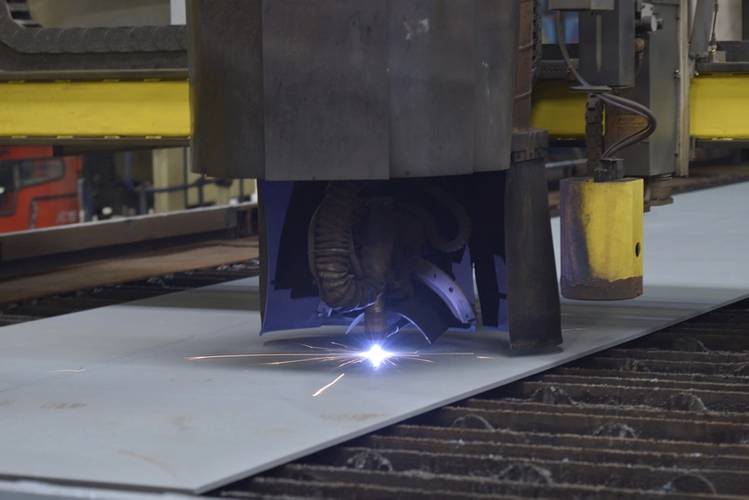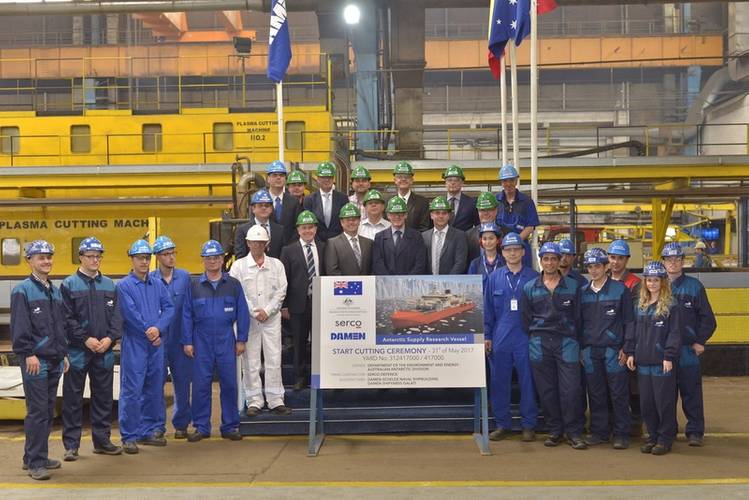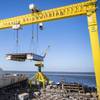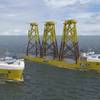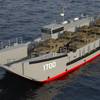Marking the commencement of construction of the Damen Antarctic Supply Research Vessel (ASRV), a steel cutting ceremony has been held at Damen Shipyards Galati, Romania. Damen is constructing the ASRV for Serco Defence, a wholly owned subsidiary of Serco Australia who, in turn, signed a contract with the Australian Government last year for the delivery, operation and maintenance of the vessel.
“Cutting the first steel for any vessel is always significant. However, the fact that the ASRV is such a ground-breaker makes this a very exciting moment,” said Damen Project Director Joop Noordijk. “The whole team are looking forward to building what is actually an icebreaker, survey vessel and resupply vessel all rolled into one.”
The 160-meter ASRV will perform numerous tasks for the Australian Antarctic Division (AAD). “The new vessel is a multi-mission ship designed to sustain our geographically dispersed stations, support helicopter operations, sustain shore parties on remote islands, map the seafloor and undertake a variety of scientific activities across the Southern Ocean,” said AAD Modernization Program Manager Rob Bryson.
To fulfil these diverse roles, the ASRV boasts considerable cargo capacity: up to 96 TEU below decks and 14 TEU and six 10-foot containers on the aft deck, as well as more above the helicopter hanger and in front of the helideck. This represents a substantial increase in container carrying capacity from the AAD’s current vessel, the Aurora Australis, which can transport a total 19 containers. In practical terms, this means that the ice-breaking ASRV will be able to resupply two stations in one voyage.
In addition to supplying Australia’s three permanent research stations on the Antarctic continent as well as its research station on the sub-Antarctic Macquarie Island with cargo, equipment and personnel, the ASRV will be able to carry out comprehensive scientific research activities. To this end, the vessel will be equipped with a 500 m2 on-board laboratory that will serve as workspace for up to 116 AAD scientific staff.
In terms of research possibilities, the ASRV will serve as a valuable asset towards the advance of scientific knowledge and understanding of the Southern Ocean. The vessel will feature a 13-meter deep wide moon-pool for deployment of conductivity, temperature, acoustic and depth measurements.
The ASRV design also incorporates a ‘wet well’ sampling space, a scientifically pioneering installation that consists of a watertight room below the water line that can be used for biological sampling. Further activities such as seismic mapping, AUV operation and net deployment can be performed on the sizeable aft deck.
A key part of the vessel design lies in the fact that the ASRV is expected to be in service – and therefore to continue to perform cutting edge research – for 30 years. “What this means is that we went for a more modularized approach to the science spaces with a preference for containerized laboratory spaces rather than fixed labs. This allows us to adapt the ship for the science questions that need to be answered in the future,” Bryson said.
Construction and outfitting of the vessel will be carried out at Damen Shipyards Galati, with engineering and project management being provided by Damen Schelde Naval Shipbuilding in the Netherlands.





